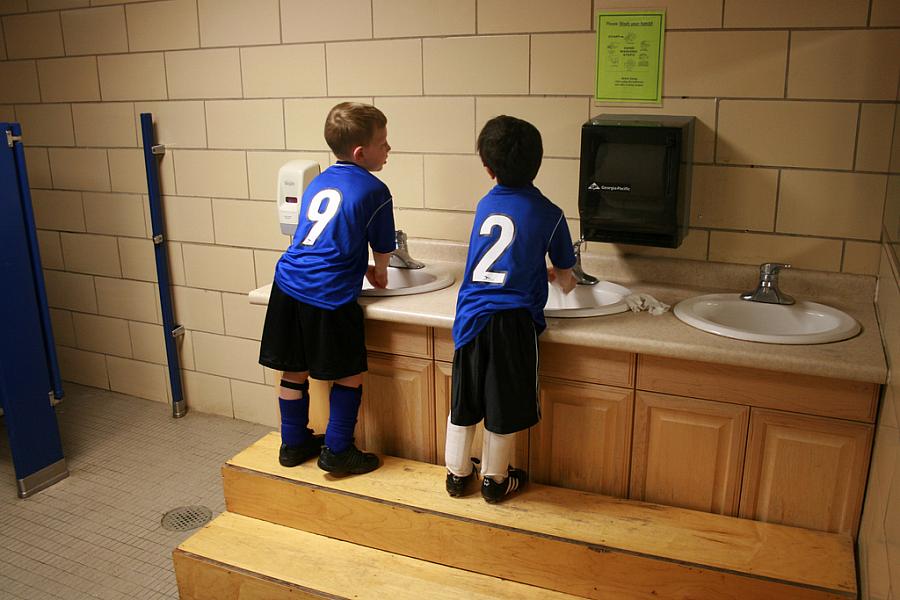News cycle pushes enterovirus spread into panic zone

This big story of the week in children’s health has been the spread of enterovirus D68, a strain of respiratory virus that has sent growing numbers of children to emergency rooms in at least 41 states.
Milder symptoms of the virus could easily be confused for a seasonal bug, with runny nose, sneezing, coughing, muscle aches and fever common. But for kids and teens with asthma, the virus can trigger severe wheezing and breathing problems. An influx of afflicted children has strained hospitals and filled emergency rooms and intensive care units at hospitals throughout the nation, The New York Times reported last week.
“The reason this is a particular concern is because it’s pretty much a bad actor in children who have a propensity to develop asthmatic attacks when they get infection with different viruses,” said Dr. Anthony Fauci, director of the National Institute of Allergy and Infectious Diseases, in a recent AP video.
In a news cycle filled with the horrors of Ebola, that might not sound overly alarming. But then on Wednesday, it was reported that four people have died after contracting the virus, including a 10-year-old girl. And the collective fear level was further ratcheted in recent days as reports came in of children showing signs of polio-like paralysis. Some of these kids have tested positive for enterovirus D68, but doctors are still figuring out the possible relation between the two.
On Monday, officials at Colorado Children’s Hospital announced that 10 patients, ages 1 to 18, were showing symptoms of paralysis at the center. “Four children tested positive for enterovirus 68, and the other four were positive for rhinovirus or another enterovirus,” The Denver Post reported.
Three similar cases of paralysis are being investigated in Kansas City, Missouri.
On Tuesday, Boston Children’s Hospital announced it had four children in its care with signs of limb weakness or paralysis. The symptoms reportedly began in the weeks after the children contracted respiratory infections. A nasal test on one of the four tested negative for enterovirus D68, while tests on the other three are still pending. But as The Boston Globe reported, “That does not rule out a connection entirely, because the virus could have been gone from the body by the time the neurological symptoms appeared.”
A CDC spokesman said Monday that the center was still investigating the possible connection between polio-like symptoms and enterovirus D68. The strain is one of more than 100 non-polio enteroviruses, according to the CDC.
While this week’s spate of news stories has shone a bright light on this spreading mystery, it’s not the first time this year reports of polio-like symptoms in kids have surfaced.
In February, CNN reported that five children in California had developed limb paralysis, despite being up to date on their polio vaccinations. Two tested positive for enterovirus D68.
And as The Washington Post’s Ariana Eunjung Cha pointed out, Stanford pediatric neurologist Keith Van Haren has been tracking about 20 children who have developed sudden, polio-like paralysis in their limbs since 2012.
“Although poliovirus has been eradicated from most of the globe, other viruses can also injure the spine, leading to a polio-like syndrome,” Van Haren said in a March news release. “In the past decade, newly identified strains of enterovirus have been linked to polio-like outbreaks among children in Asia and Australia. These five new cases highlight the possibility of an emerging infectious polio-like syndrome in California.”
A cold that might be more than it seems. A wheeze that grows sinister. Kids suddenly rendered weak or paralyzed. Doctors struggling to unwind a medical mystery. All the requisite ingredients are here for the kind of Twitter-fueled panic party that keeps parents up at night and Purell on backorder. Or as one parent tweeted upon reading news reports of paralysis: “(A)s I listen to my sick kid coughing in her sleep, hard not to enter into the enterovirus paranoia zone.”
But one way health reporters can keep the conversation grounded is by putting the risks in context.
The CDC has tallied a total of 472 confirmed cases of enterovirus D68 from mid-August through September 30. The association with polio-like symptoms is anything but confirmed, but even so, the number of reported children so afflicted still numbers less than two dozen – nationwide. Risk is relative. The chances of a child or teen dying in a car crash, drowning or suffocating are all many, many orders of magnitude higher than contracting polio-like symptoms or dying in the wake of a respiratory illness. Too few news stories contextualize risk in meaningful ways.
That said, public health officials are still advising parents to keep tabs on their kids’ colds, especially if they have asthma or start having difficulty breathing. The CDC’s suggestions for preventing enterovirus are indistinguishable from standard germ-fighting tactics: wash your hands, cover up sneezes and coughs, keep germy hands off your face, stay home when sick and avoid close contact with sick people.
Photo by woodleywonderworks via Flickr.
